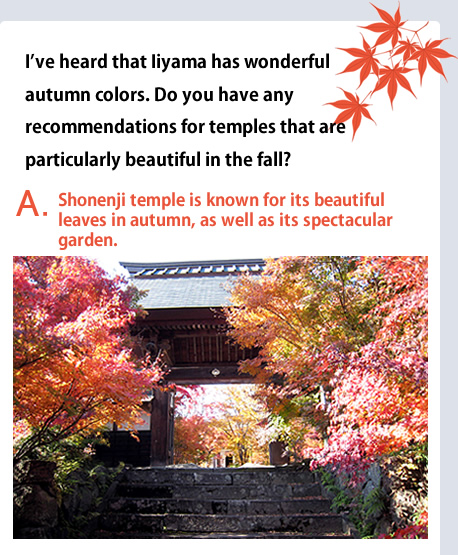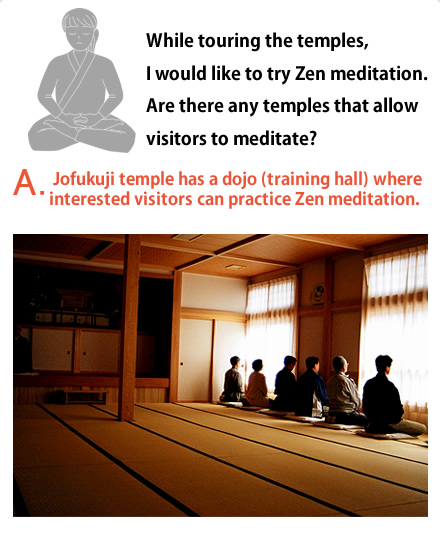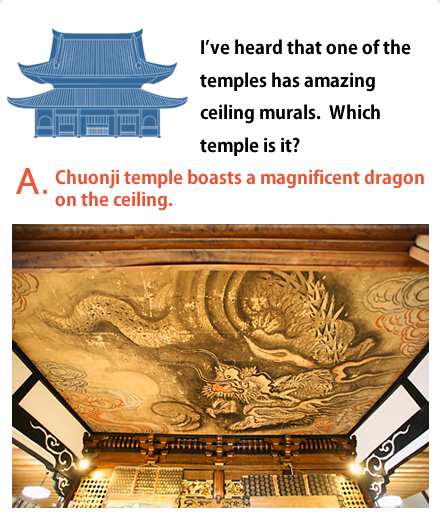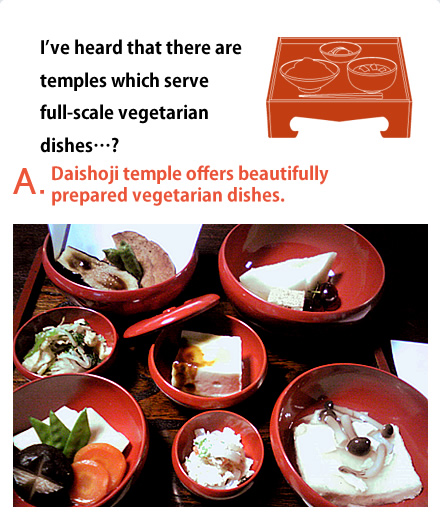Called "snow country's little Kyoto" by literary master Toson Shimazaki, Iiyama is home to many temples. The city's temple culture is captured in famous lyricist Tatsuyuki Takano's "Iiyama kouta (Iiyama ballad)," which tells of "thirty-six temples and bells chiming in Atago.” It's said that for ages temples have lined the Atago-machi and Shinmei-machi streets, running along the Chikuma River banks near the ruins of Iiyama castle.
Atago-machi district, with its distinctive snow-country architecture, is commonly known as a "Buddhist altar street" for the many altar shops that line the road.
Temples and shrines can be found in plenty, and a temple promenade connecting each site runs parallel to the main street. Walking along this path, you can visit and enjoy many beautiful Iiyama temples.
Recently, the old Zen temple Shojuan, used as a film location, and Shinshuji, known as the setting for the novel Hakai, have become quite well known. However, Iiyama offers many other places to see, including a tour of shrines hosting the “the Seven Deities of Iiyama's Good Fortune,” and a temple offering vegetarian dishes prepared in the style of traditional Buddhist monks. Keep reading for an introduction to some of these temples and shrines!
 Shonenji is a prominent historic temple in Iiyama, snow country's little Kyoto. Called Kokedera (Moss temple) for its mossy grounds, it is famous for the exquisite contrast between the small, but well-maintained stone garden and the beautiful colors of its maple trees. The best time to enjoy colorful leaves in fall is early to mid November, before the snowy season. However, even during the winter, temple grounds are shoveled to allow visitors access to the main hall.
Shonenji is a prominent historic temple in Iiyama, snow country's little Kyoto. Called Kokedera (Moss temple) for its mossy grounds, it is famous for the exquisite contrast between the small, but well-maintained stone garden and the beautiful colors of its maple trees. The best time to enjoy colorful leaves in fall is early to mid November, before the snowy season. However, even during the winter, temple grounds are shoveled to allow visitors access to the main hall. Jokozan-kenshoin Temple
Jokozan-kenshoin Temple


 Jofukuji temple was founded by Tohaku, a Buddhist priest in 1951. The building includes a Zen meditation dojo hall, and Zen meditation is generally practiced during the morning Buddhist service.
Jofukuji temple was founded by Tohaku, a Buddhist priest in 1951. The building includes a Zen meditation dojo hall, and Zen meditation is generally practiced during the morning Buddhist service. Ryusuisan
Ryusuisan


 Chuonji temple was first founded in the Naganuma district of Nagano City in 1559, and moved to Iiyama following the transfer of Naganuma lord Kazumasa Seki in 1601. Thereafter, the temple was protected by successive generations of feudal lords in Iiyama. In particular, viewing Chuonji as a family temple, Tadasada Matsudaira contributed 16 koku (approx. 2.2 tons) of rice and Bungonokami Honda contributed 50 bales of rice for a temple memorial service. A cemetery on the temple grounds holds generations of Matsudairas and Hondas.
Chuonji temple was first founded in the Naganuma district of Nagano City in 1559, and moved to Iiyama following the transfer of Naganuma lord Kazumasa Seki in 1601. Thereafter, the temple was protected by successive generations of feudal lords in Iiyama. In particular, viewing Chuonji as a family temple, Tadasada Matsudaira contributed 16 koku (approx. 2.2 tons) of rice and Bungonokami Honda contributed 50 bales of rice for a temple memorial service. A cemetery on the temple grounds holds generations of Matsudairas and Hondas. Shojuzan Shokakuin
Shojuzan Shokakuin


 Daishoji was a family temple for the Hori and Sakuma feudal lords. It is said that Naiki Imai, a descendant of Kanehira Imai - the vassal of Yoshinaka Kiso - originally founded the temple in 1570 as a memorial for his father. Vegetarian dishes, prepared by the young chief priest trained at Eiheiji temple, are available by reservation only.
Daishoji was a family temple for the Hori and Sakuma feudal lords. It is said that Naiki Imai, a descendant of Kanehira Imai - the vassal of Yoshinaka Kiso - originally founded the temple in 1570 as a memorial for his father. Vegetarian dishes, prepared by the young chief priest trained at Eiheiji temple, are available by reservation only. Shoyozan
Shoyozan



Travel Agent Registration No.2-492 certified by Governor of Nagano Prefecture ANTA PARTNER
Copyright © 2024 Shinshu-Iiyama Tourism Bureau All Rights Reserved.